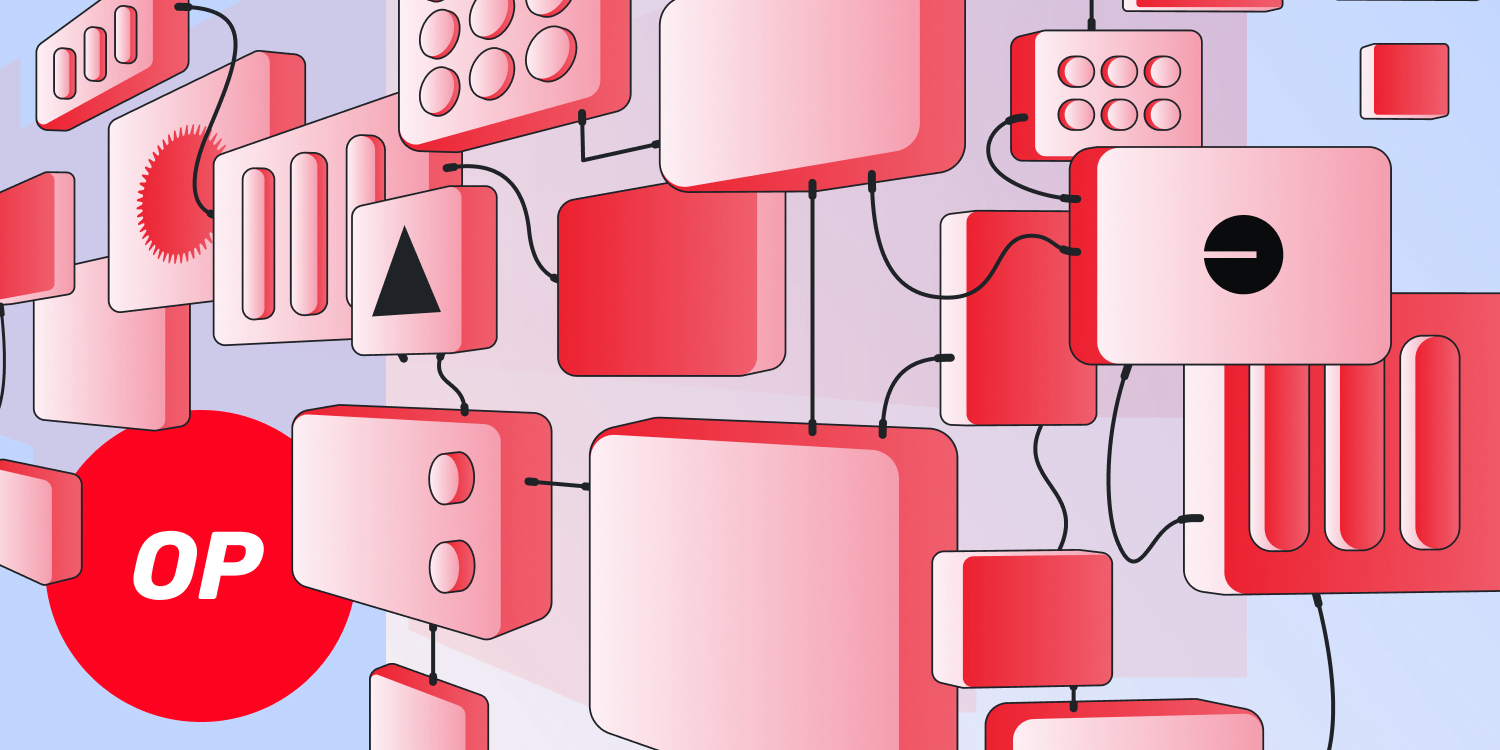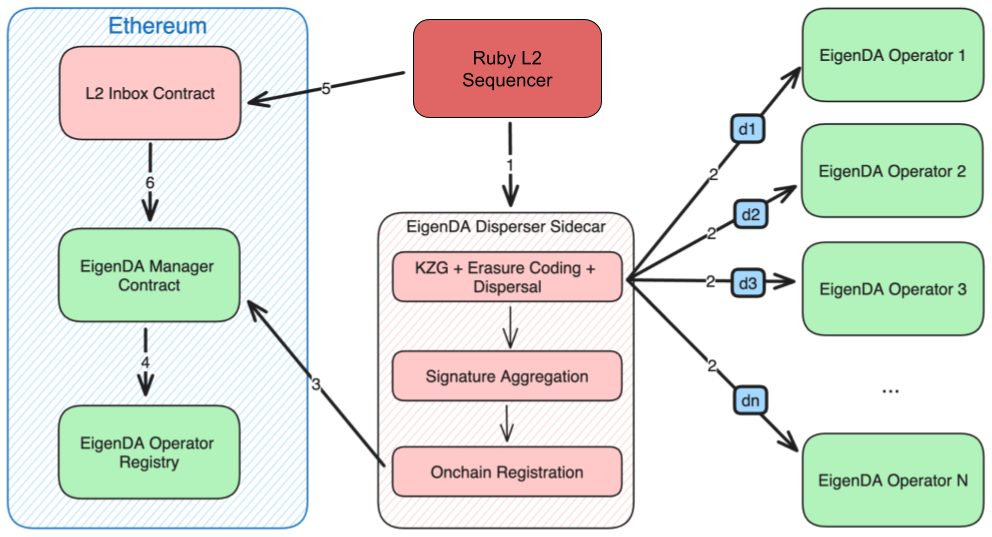Building with OP Stack and EigenLayer
OP Stack
Ruby Chain is built on the OP Stack, a premier Layer 2 scaling solution for Ethereum. This solution is renowned for its scalability, innovative ecosystem, and adaptable framework, all of which are tailored to meet the unique requirements of the Ruby Network. The OP Stack, integral to Optimism, plays a crucial role in providing standardization and shared resources. It serves as a robust foundation for developers, ensuring that Ruby Chain inherits the robustness, efficiency, and scalability inherent to Optimism's architecture. This, in turn, guarantees a superior blockchain experience for developers and users, making Ruby Chain a reliable and efficient choice in the blockchain landscape.

What's even more exciting is that in the future, the Superchain will merge the Optimism Mainnet and other OP Stack chains (e.g., OP, BASE) into a single, unified network of OP Chains. The Superchain paradigm will shift the current landscape from a multi-chain architecture to a cross-chain architecture by developing infrastructures like shared sequencers and bridges. From a regular user's perspective, they can, for example, send transactions from any point in the ecosystem to another without network switching or bridging and perform complex transactions such as cross-chain flash loans. The vision of Superchain is that hundreds or thousands of OP-chains will be fully interoperable on Optimism and connected by the same technical fabric. dApps on Ruby Chain will be more interoperable and social experiences more seamless in the larger ecosystem.
Utilizing the OP Stack for Ruby Chain and Future Builders
Leverage Existing Modules: The OP Stack's pre-built modules accelerate development, enabling faster innovation cycles. This modular approach allows developers to efficiently integrate advanced functionalities without starting from scratch.
Optimize Costs: Ruby Chain goes beyond mere customization by enhancing the Data Availability layer within the OP Stack. This optimization significantly reduces user transaction costs, providing participants with a secure and cost-effective experience.
Join an Open Ecosystem: The OP Stack fosters an open and collaborative environment where numerous projects can interoperate and benefit from one another. By adopting the OP Stack, Ruby Chain connects to a network of Layer 2 chains that utilize the same technology stack, facilitating seamless collaboration and shared progress.
Embrace the Vision of the Superchain: The OP Stack lays the groundwork for a future populated with hundreds, even thousands, of interoperable OP chains within the Optimism ecosystem. This interconnected framework promises a more seamless user experience, enhancing social interactions and data utilization across a vast and cohesive ecosystem.
By building on the OP Stack, Ruby Chain harnesses a powerful and flexible framework and positions itself within a dynamic and collaborative environment. This strategic choice ensures that Ruby Chain remains at the forefront of innovation, offering scalable, cost-effective, and interoperable solutions for the evolving needs of the blockchain community.
EigenLayer
In the roll-up pattern, the sequencer posts blocks of transactions to Ethereum or a separate data availability service. Although posting transaction data directly to Ethereum is secure, its data availability capability is currently not scalable and is unlikely to become highly scalable in the near future. Ruby Chain L2 addresses this issue by leveraging EigenLayer’s data availability infrastructure (EigenDA). This solution significantly reduces transaction costs for users. EigenDA is highly scalable and employs the novel concept of pooled security through restaking.

The core insight of EigenDA is that the problem of data availability does not require independent consensus to solve. In building a decentralized transient data store for Ethereum rollups, Ethereum can be used for aspects of coordination required, and data storage can be handled by EigenDA operators directly.
This approach gives EigenDA the ability to scale linearly. In the context of an L1 blockchain, increasing throughput means either increasing block size or decreasing block times. Beyond a certain point, increases in scalability come at the cost of security or decentralization (see "blockchain trilemma"). One way around this trilemma is through an emphasis on L2s, where DA can be moved off-chain such that transaction data need not be replicated to every node. Instead, only DA metadata and accountability processes are processed on-chain. This enables DA to scale with respect to the bandwidth of the operator set.